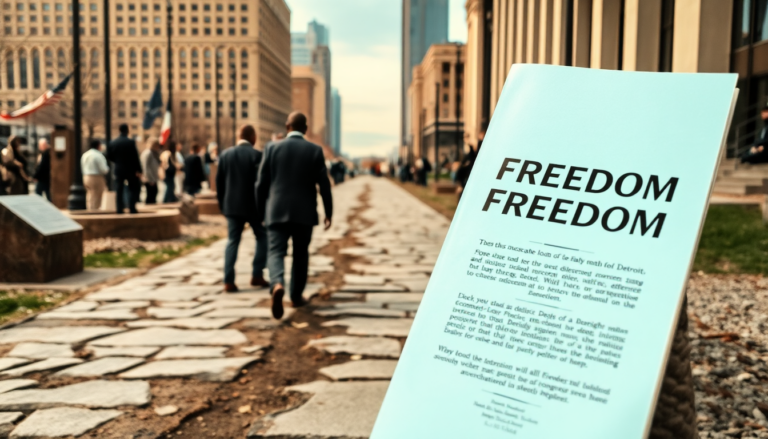Argomenti trattati
The 1966 Freedom Rally held at Cobo Hall in Detroit was not just an event; it was a powerful statement in a tumultuous period of American history. Marked by the presence of iconic figures like Martin Luther King Jr., this rally became a symbol of the ongoing fight for civil rights. The imagery of the pale blue brochure from the event, depicting two men walking down a path lined with significant artifacts, encapsulates the spirit of solidarity and progress that defined the era.
A visual representation of struggle
At first glance, the brochure’s design speaks volumes. The drawing of one man supporting another reflects the essence of community support and resilience. Each item depicted—a helmet, a briefcase labeled with the name James Meredith, and a sign for Highway 51—holds its own story within the broader narrative of the civil rights movement. The items are not mere illustrations; they symbolize the struggles faced by individuals who dared to challenge the status quo. The helmet signifies protection, the briefcase represents the ambition and determination of those like Meredith, a trailblazer in the fight for equality.
Notable figures present at the rally
The program was signed by influential leaders, including Martin Luther King Jr., Walter Reuther, and Governor G. Mennen Williams. Each signature is a testament to the diverse coalition of support that came together for this cause. King, known for his eloquent speeches and unwavering commitment to nonviolence, brought a moral compass to the rally. Reuther, as the president of the United Auto Workers, represented labor’s role in the civil rights struggle, while Governor Williams emphasized the need for political backing in the quest for justice. Their collective presence highlighted the interconnectedness of social justice and labor rights.
The role of the hostesses
On the back of the program, a list of the “Freedom Rally Hostesses” captures another dimension of the event. These women played a vital role, providing support and ensuring that the rally ran smoothly. Their involvement was not only a gesture of hospitality but also a reflection of women’s crucial participation in the civil rights movement. Historically, women like Rosa Parks and Ella Baker were instrumental in organizing grassroots efforts, and their legacy continued through events like this rally, where their contributions were acknowledged and celebrated.
Impact and legacy of the rally
The 1966 Freedom Rally was more than just a gathering; it served as a catalyst for change. It helped to mobilize communities and raise awareness about the pressing issues of racial injustice and inequality. Events like this were crucial in fostering dialogue and spurring legislative efforts to address civil rights. The rally drew attention to the ongoing struggle for freedom and equality, reminding attendees and observers alike that the fight was far from over. Its legacy can still be felt today, as movements for social justice continue to echo the sentiments expressed during that pivotal time.
Looking back: a reflection on progress
As we reflect on the 1966 Freedom Rally, it’s essential to recognize the progress made since then while acknowledging the work that still lies ahead. The spirit of unity and resilience displayed during the rally serves as an inspiration for current and future generations. The fight for equality is ongoing, and events like the Freedom Rally remind us of the importance of community, solidarity, and the unwavering pursuit of justice.

